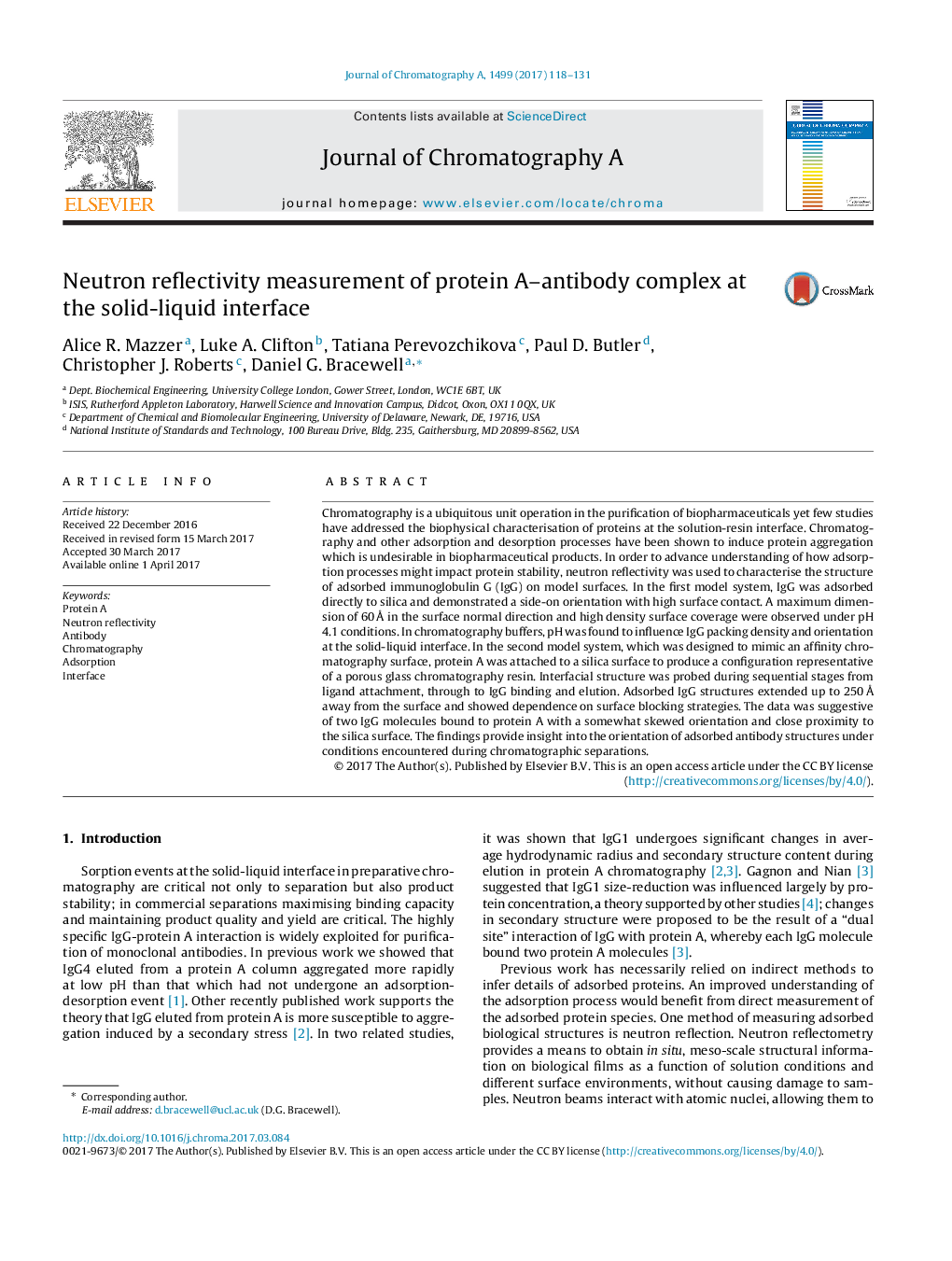| کد مقاله | کد نشریه | سال انتشار | مقاله انگلیسی | نسخه تمام متن |
|---|---|---|---|---|
| 5135172 | 1493427 | 2017 | 14 صفحه PDF | دانلود رایگان |

- The orientation of IgG4 adsorbed at the solid-liquid interface was probed.
- A chromatography resin was mimicked by attaching protein A to a silica surface.
- Neutron reflectivity was used to measure protein A and adsorbed IgG structures.
- Protein A-modified silica was blocked with either BSA or PEG before IgG adsorption.
- Adsorbed IgG extended up to 230Â Ã
from the surface, depending on blocking strategy.
Chromatography is a ubiquitous unit operation in the purification of biopharmaceuticals yet few studies have addressed the biophysical characterisation of proteins at the solution-resin interface. Chromatography and other adsorption and desorption processes have been shown to induce protein aggregation which is undesirable in biopharmaceutical products. In order to advance understanding of how adsorption processes might impact protein stability, neutron reflectivity was used to characterise the structure of adsorbed immunoglobulin G (IgG) on model surfaces. In the first model system, IgG was adsorbed directly to silica and demonstrated a side-on orientation with high surface contact. A maximum dimension of 60Â Ã in the surface normal direction and high density surface coverage were observed under pH 4.1 conditions. In chromatography buffers, pH was found to influence IgG packing density and orientation at the solid-liquid interface. In the second model system, which was designed to mimic an affinity chromatography surface, protein A was attached to a silica surface to produce a configuration representative of a porous glass chromatography resin. Interfacial structure was probed during sequential stages from ligand attachment, through to IgG binding and elution. Adsorbed IgG structures extended up to 250Â Ã away from the surface and showed dependence on surface blocking strategies. The data was suggestive of two IgG molecules bound to protein A with a somewhat skewed orientation and close proximity to the silica surface. The findings provide insight into the orientation of adsorbed antibody structures under conditions encountered during chromatographic separations.
Journal: Journal of Chromatography A - Volume 1499, 26 May 2017, Pages 118-131